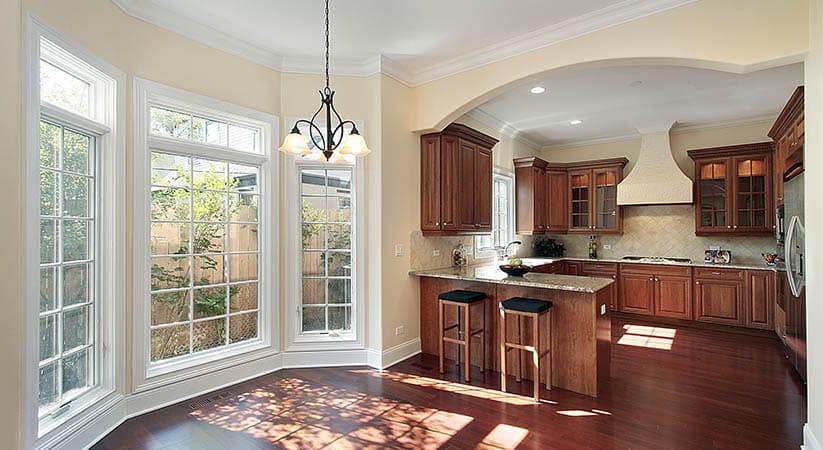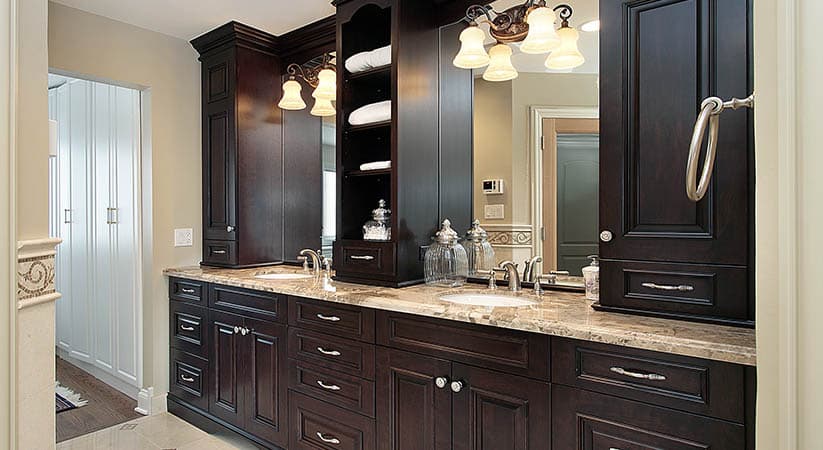Kitchen remodeling often focuses on surfaces, especially counters, which stand as both a functional workspace and a design statement. That’s why quartz kitchen countertops have surged in popularity in recent years, offering a combination of durability and aesthetic appeal. It’s astonishing how engineered quartz can mimic natural stone while delivering a wide array of colors and patterns. Chefs love the non-porous surface because it resists stains from ingredients like tomatoes or wine. On the style side, quartz comes in marbled, speckled, or uniform finishes, catering to modern minimalists and classic traditionalists alike. The result is a surface that looks elegant and meets the demands of daily cooking. This fusion of form and function captures why so many homeowners choose quartz when refreshing their kitchens.
The Practical Advantage of Quartz
Unlike genuine stone, quartz countertops blend roughly 90% ground quartz with resins that bind everything together. This manufacturing process yields a material with consistent coloration and fewer natural flaws. It’s comforting to realize that quartz requires minimal upkeep—just mild soap and water typically suffice for cleaning. The non-porous quality prevents bacteria from seeping in, enhancing hygiene in food-prep areas. Some brands incorporate advanced sealing technology, although quartz generally doesn’t need sealing like granite does. This simplicity saves time and worry, freeing homeowners to enjoy their remodeled space without constant maintenance. However, no countertop is entirely immune to damage. Quartz can scratch or chip if hit with enough force, so care is still advisable when handling heavy pots or sharp utensils. Even so, it remains one of the most user-friendly choices on the market.
Appearance and Consistency
One of the major appeals of quartz lies in its predictable patterns. Natural stones might showcase unique veining but can be difficult to match if multiple slabs are needed or if you have an extensive layout. Quartz offers uniformity, making it easier to create a cohesive look across a large kitchen island or countertops that wrap around a corner. It’s ideal for those seeking a sleek, contemporary aesthetic free from random blemishes or color shifts. On the flip side, some homeowners miss the organic charm that comes from genuine stone’s unpredictable veins and fissures. Still, recent advancements enable quartz designs that mimic natural textures more convincingly than ever before. This versatility helps homeowners strike the perfect balance between artistry and practicality, whichever direction their design preferences lean.
In the middle of any conversation about stone surfaces, granite countertops Potomac maintains a strong presence. Granite has been a staple in kitchen design for decades, valued for its natural beauty and durability. It’s common to see dramatic veins and mineral flecks that tell a geological story millions of years in the making. Properly sealed granite resists stains and heat, though it does require periodic resealing to maintain peak performance. Some owners appreciate the tactile feel of authentic stone under their hands as they cook or clean. The surface can handle hot pans, though placing a trivet is still advisable to protect the sealant. Granite’s distinctive patterns also lend a richness that many engineered surfaces try to replicate but rarely match. Choosing between granite and quartz often comes down to taste, budget, and willingness to manage upkeep. Both materials can stand up to the rigors of daily life, but they differ in their look and care requirements.
Weighing Costs and Options
The price tag for new counters can vary based on thickness, finish, and rarity of the chosen material. Exotic granite slabs featuring rare colors can be quite expensive, while more common varieties are competitively priced against quartz. It’s wise to request samples and quotations from multiple suppliers or fabricators. Labor costs add to the bottom line, influenced by the complexity of your layout and how many cuts or seams you need. Certain edge profiles—like beveled or bullnose—can also affect the final invoice. Though the total can be steep, many see the countertop as a focal point that justifies the investment, especially if they plan on staying in the home long-term. Quality counters can also enhance resale value, attracting buyers who appreciate a turnkey kitchen. Ultimately, a balanced approach—factoring in both aesthetics and functionality—guides homeowners toward a choice that aligns with their culinary habits and design goals.
Installation Process and Considerations
Once you’ve chosen your material, a fabricator will measure the space and note any irregularities in walls or cabinetry. These experts cut slabs to size, creating openings for sinks and appliances. It’s important to ensure your base cabinets can support the weight of stone, as even smaller pieces can be incredibly heavy. During installation, the team typically uses adhesives to bond sections and seal edges for a flawless finish. Minor adjustments might be made on-site if unexpected obstacles arise, such as uneven floors or slight misalignments. It’s gratifying to watch professionals fit each piece accurately, leaving no awkward gaps or mismatched seams. While some dust or mess is inevitable, a reputable company will minimize disruption and clean up thoroughly. Once the adhesive sets, the countertop is essentially locked in place for decades of use, provided it’s well maintained.
Coordinating Colors and Backsplashes
A new countertop doesn’t stand alone; it integrates with cabinets, flooring, and backsplash elements. Homeowners often bring samples of paint or tile to ensure their chosen material complements the overall scheme. It’s amazing how a small swatch can guide you toward the right quartz hue or granite slab. Popular backdrops include subway tiles that provide a neutral canvas for a bold countertop, or intricate mosaics that pair well with more subdued counters. Lighting fixtures further influence how colors appear, since granite and quartz surfaces can change tone under artificial or natural light. Reflective finishes bounce rays around the kitchen, making it feel more open and lively. This synchronization between color, texture, and light defines the kitchen’s character. By carefully selecting coordinating finishes, you create a cohesive space that elevates mealtime gatherings and daily routines alike.
Conclusion
Ultimately, bringing your dream kitchen to life often involves consulting a granite contractor Rockville who can address specific questions about materials, costs, and installation. It’s reassuring to discuss details like edge profiles, slab dimensions, and sealing procedures with a specialist who understands natural stone and engineered surfaces alike. You’ll likely receive care instructions tailored to your selection, such as which cleaners to avoid and how frequently to reseal granite. By treating your counters with respect, you ensure they remain a stunning feature for years to come. It’s fulfilling to see the finished product installed, knowing that thoughtful planning and professional craftsmanship have elevated your cooking space. Whether you settled on quartz for its uniformity or granite for its organic allure, a well-chosen countertop transforms a kitchen into a functional yet welcoming hub of the home, reflecting your personal style and serving your daily needs in equal measure.



